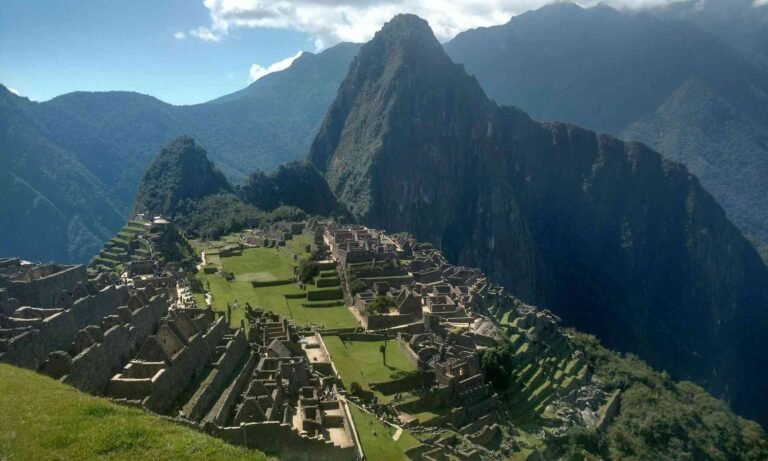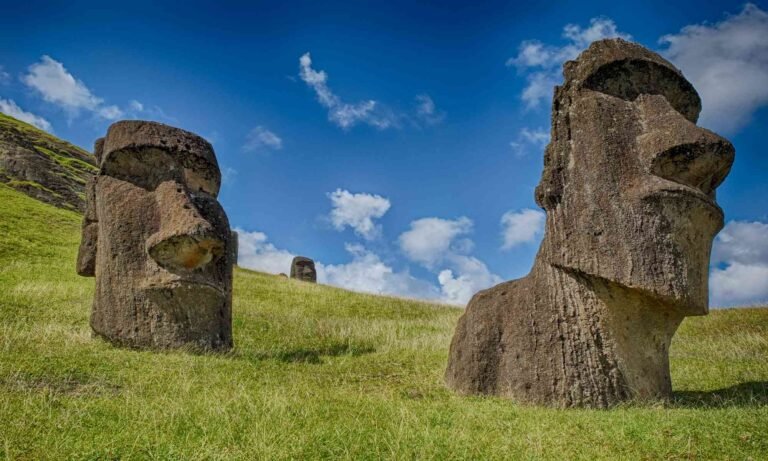The Historical Context
The Pyramids of Giza were built during the Old Kingdom period of ancient Egypt, specifically between 2580 and 2560 BCE, which is often considered a zenith of ancient Egyptian civilization. This period was marked by the consolidation of political power and the establishment of a centralized government, culminating in the reign of the Pharaoh Khufu, known for commissioning the Great Pyramid. As a symbol of divine kingship, the pharaohs played a pivotal role in both the political and spiritual lives of the people. Their authority was not only secular; they were also seen as intermediaries between the gods and humanity, which underpinned their grand building projects.
The construction of the pyramids was directly influenced by the socio-political landscape of the time. A strong centralized state required monumental architecture that would reflect its power and ideologies. The pyramids served a dual purpose: they were burial places for the pharaohs and monumental statements of their status and divine connection. The belief in an afterlife was a driving force behind the creation of these structures. Ancient Egyptians held a firm conviction that their rulers would ascend to the heavens and join the gods. Consequently, the pyramids were designed not only to protect the remains of the pharaohs but also to facilitate their journey into the afterlife.
This intricate cultural belief system incorporated ideas of immortality and divine judgment. The elaborate tombs contained provisions and treasures believed necessary for the pharaohs in the afterlife, reflecting the ancient Egyptians’ deep spirituality and respect for their rulers. The architecture of the pyramids, with their precise alignments and massive scale, speaks volumes about the technological prowess of the time, and remains a testament to how deeply the socio-political and cultural factors of the Old Kingdom shaped these monumental constructions.
Architectural Marvels: Construction Techniques
The Pyramids of Giza stand as towering testaments to the ingenuity of ancient Egyptian architecture. These colossal structures were primarily built using limestone, granite, and other natural materials sourced from nearby quarries. The outer casing stones, made of Tura limestone, were carefully polished to create a brilliant surface that reflected sunlight, giving the pyramids their original dazzling appearance. The granite used for inner chambers, particularly from Aswan, indications of advanced transport and logistics skills, considering the distance they had to be moved.
In terms of tools, the ancient Egyptians employed simple yet effective implements. Copper chisels, stone hammers, and wooden sledges were likely utilized in the precise cutting and movement of massive stone blocks. Recent archaeological discoveries suggest that they may have used a form of lubrication with water or oils on the sleds to facilitate transportation over sandy terrain, which significantly reduced friction and enhanced efficiency during the building process.
The manpower required for such an ambitious project was substantial. It is estimated that tens of thousands of workers, including skilled laborers and seasonal agricultural labor during the Nile floods, contributed to the construction. Evidence points to a well-organized workforce, which might have utilized a rotational labor system, thus ensuring a steady and efficient output of work without exhausting a single group of individuals.
Theories regarding how these ancient builders achieved such precision in alignment and construction have sparked numerous discussions. Among them, the ramp theory proposes various designs such as straight, circular, or zigzagging ramps that could have formed a connection to the pyramid. Others suggest the use of levers and counterweights, emphasizing the technological innovation of the Egyptians. Recent archaeological findings continue to provide new insights into these construction techniques, allowing modern scholars to appreciate the complexity and sophistication of ancient Egyptian engineering.
Cultural Significance and Symbolism
The Pyramids of Giza, monumental structures of ancient Egypt, denote vast cultural significance and profound symbolism within the context of Egyptian society. Primarily serving as grand burial sites for the Pharaohs, these pyramids represent the divine status of the rulers and their intrinsic connection to the pantheon of gods that the ancient Egyptians revered. The architectural wonder of these pyramids reflects the deep-seated beliefs surrounding death, the afterlife, and the passage into a realm of eternity.
At the core of ancient Egyptian culture lies the belief in an afterlife, a concept that shaped their entire worldview. The Pharaohs, considered living gods, were thought to transcend the earthly realm upon death, assuming their eternal roles among the deities. The pyramids, thus, were not mere structures; they were sacred spaces, meticulously designed to facilitate the Pharaoh’s journey into the afterlife. This entailed not just physical interment but the assurance of spiritual continuity through elaborate rituals.
Rituals and offerings were integral to ensuring a successful transition to the next life. Ancient Egyptians believed that the soul required sustenance and protection in the afterlife. Consequently, the pyramids were often filled with artifacts, food, and treasures that the Pharaoh would need in the next world. Moreover, the careful alignment of the pyramids with celestial bodies underscores the interconnectedness of death and the cosmos, illustrating the belief that the Pharaohs would spend eternity among the stars, akin to their deities.
The grandeur of the Pyramids of Giza remains a testament to the innovative spirit and cultural richness of ancient Egypt, capturing the essence of a society deeply invested in life, death, and divine legacy. These structures reflect the Egyptians’ sophisticated understanding of architecture, astronomy, and engineering. The Pyramids continue to inspire awe, standing as timeless reminders of the ingenuity and spiritual depth of ancient Egypt.
Ley lines are hypothetical alignments of ancient sites and monuments, suggesting a network that ancient civilizations may have intentionally created. Proponents believe these lines may hold spiritual significance, possibly connecting sites of historical importance like the Pyramids of Giza, Stonehenge, and others across the globe.
Many researchers and enthusiasts of ancient architecture speculate about the relationship between the Pyramids of Giza and ley lines. Some claim that the pyramids are situated near many ley lines, which could indicate that the ancient Egyptians had a sophisticated understanding of geography and energy flow.
While scientific evidence on ley lines is limited, the allure of these connections encourages further exploration into how ancient cultures viewed their surroundings. The discussion surrounding the Pyramids of Giza and ley lines intertwines history, archaeology, and a bit of mystique. Whether one believes in ley lines or not, the Pyramids remain a focal point in our quest to understand ancient human civilization and its intricate connections to the world around them.
Modern Day Impact and Preservation Efforts
The Pyramids of Giza stand as monumental symbols of ancient engineering and cultural heritage, significantly impacting the contemporary world. As designated UNESCO World Heritage sites, they represent not only the grandeur of ancient Egypt but also play a vital role in global heritage preservation. The pyramids attract millions of tourists each year, serving as a significant source of revenue for the Egyptian economy. This influx of visitors, while beneficial, brings with it numerous challenges that threaten the integrity of these historic structures.
One of the primary concerns facing the Pyramids of Giza is the environmental degradation caused by urbanization and pollution. The surrounding city of Cairo has seen rapid growth, leading to increased air pollution and structural vibrations from traffic, both of which pose risks to the ancient stones. Additionally, climate change and its related effects, such as rising temperatures and erratic weather patterns, further exacerbate these challenges. As such, maintaining the preservation of the pyramids is critical not only for heritage reasons but also for sustaining a major tourist attraction.
To combat these threats, various organizations, including the Egyptian government and international bodies, have initiated extensive preservation efforts. Restoration projects, maintenance protocols, and conservation funding are directed towards protecting these ancient monuments. Moreover, awareness campaigns aim to educate the public about the importance of preserving the pyramids and the need to adopt sustainable tourism practices. Engaging the local community and visitors in these efforts plays a crucial role in ensuring that the pyramids are not only celebrated for their magnificence but also protected for future generations to experience.
In conclusion, the Pyramids of Giza remain a profound testament to human ingenuity. Their modern significance, influenced by global tourism and various environmental challenges, drives ongoing preservation initiatives essential for safeguarding their legacy. Through coordinated efforts by organizations and communities, these ancient wonders can continue to inspire fascination and respect well into the future, ensuring that their historical and cultural importance is preserved for generations to come. The enduring allure of the Pyramids serves as a reminder of humanity’s shared heritage and the importance of protecting such treasures.
What’s More
The posts in My Blog feature reflective, story-driven pieces rooted in personal and societal insights.
The topics in My Interests explore abstract, philosophical ideas and their cultural and societal impact.
👁️ 7,370 Views

















